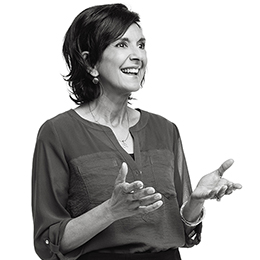In my first post on leading with purpose, I outlined two reasons for cynicism around mission statements. The first reason is that too many mission statements are meaningless platitudes, and I discussed this in a previous article. The second reason is that people in the organization don’t live up to the mission. The company is so often misaligned with it. The grand pronouncements don’t line up with the things people are asked to do every day. In short, managers and leaders don’t walk the talk. If the mission statement is about “valuing customers above all” while management obsesses over everything but the customers, people simply disengage from the mission.
Assuming you really want people to engage with the mission, everything you do needs to align with it. This means carefully examining and possibly redesigning the core processes of the organization — everything from strategy to marketing to R&D to sales to compensation. Are any of these processes undermining the mission?
Every core process needs to support the mission in a simple, visible, and consistent way. Think of the core process in the dabbawala organization. After collecting the lunchboxes between nine and ten in the morning, they pack them onto trolleys and push them to the railway stations. The boxes go by train to a central station for unloading, then color-coded so they end up in a similar destination as other boxes. At the receiving station, the dabbawalas load the boxes onto their trademark silver bicycles. They only have their bicycles, the coded boxes, and the city train system as a resource. And then in the afternoon they reverse the process, picking up the empty boxes and returning them to the residents.
After studying the dabbawalas’ core processes, Forbes compared it to a Six Sigma process, which means the lunchbox men make only one error in every sixteen million transactions! According to the professionals who evaluated their system, the dabbawalas’ process works so well because it is simple, visible, and consistent.
Everyone, from the youngest dabbawala to the chairman of the association, can describe the simple process. The dabbawalas know exactly where they are going 100 percent of the time.
The system is visible. The lunchbox code contains the entire work process, from start to finish. A few symbols on each lid indicate exactly where the lunchbox came from and where it is going.
And consistency is, of course, the hallmark of the dabbawalas’ service. You can count on them without question. The dabbawalas take pride in their consistent quality of service. They wear distinctive white caps and tunics, and their silver bicycles are recognized everywhere. There is no overreliance on technology, but a lot of reliance on a winning team.
The passion of the dabbawalas means they never let down a customer. When a disastrous monsoon struck Mumbai in 2005, the city’s network of trains stopped completely. So the dabbawalas made their way to checkpoints on foot, carrying the dabbas through torrential rains and floods. Few if any customers were missed. Uninterrupted service is that important to the dabbawalas.
What about your core processes? What could you do to simplify your processes? Make them more visible? Make them more consistent with the mission of the organization and consistent in execution? In the end, people will never engage with a “mission” that is not a mission, that is meaningless corporate-speak. And if they’re not asked to live by it, the mission doesn’t matter anyway.
But if you want to engage the full power of your people, involve them in finding your organization’s voice. Then let that voice govern everything you do.
Leading with purpose: Action Steps
Here are the key steps to lead your team or organization with purpose. Involve your team in discussing these questions. The outcomes should be (1) an engaging mission statement and (2) core processes that clearly support that mission.
Step 1: Find the voice of your team.
- Do we have a written team mission? Does it inspire our energy and determination, or are we just going through the motions?
- Does our mission leverage the irreplaceable talents of each team member? Do we even know what those talents are?
- Does our mission meet the demands of conscience? Are we socially responsible?
- What is the specific job our customers are hiring us to do? Is it changing?
- Given our answers to these questions, how can we refine our mission or purpose statement?
Step 2: Align with the mission.
- What are our core processes? Do our core processes clearly support the mission?
- What do we need to make our processes simple, visible and consistent?







